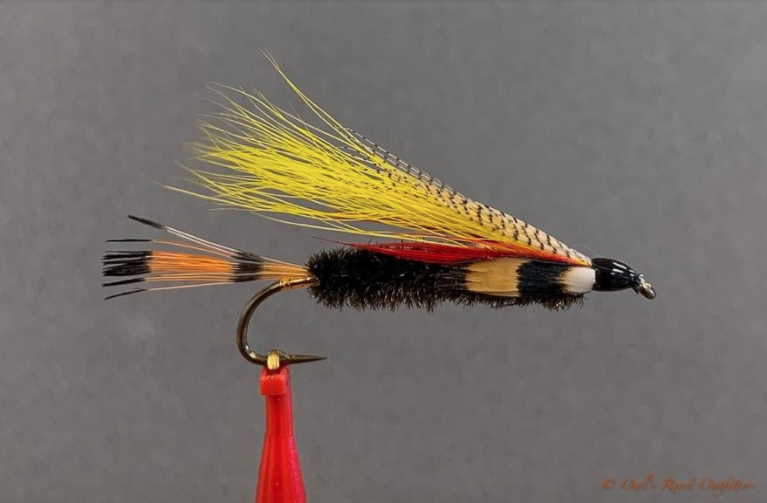By Scott Biron
Originally known as the Connecticut River Dick, this versatile bucktail streamer fly has an interesting history. In 1928 the fly was developed by Dick Eastman a fly tyer from Groveton, NH. The story goes that he was the camp manager and was tying flies at Camp Idlewild on the Second Connecticut Lake in northern New Hampshire. This particular fly went through a couple iterations and proved to be a “real killer” – according to Dick – on trout.
Back in 1956 the late Jessie Scott, a Game Warden, wrote about the fly and expressed that over time the pattern had many changes made to it. He went on to include the original fly recipe and that in his opinion this original was the more productive.

The fly incorporates some very basic materials that have a way of attracting trout and salmon.
- Hook: 6X long Daiichi 2340
- Thread: Black
- Tag: Narrow flat gold tinsel
- Tail: About fifteen strands of a golden Pheasant tippet, long
- Body: Peacock herl wound into a rope to make a full/heavy looking body
- Wing: yellow bucktail, short enough so that it will not catch under the hook
- Topping: A very small clump of lemon wood duck flank, nearly as long as the bucktail
- Shoulder: Strip of red goose cheek, slim and nearly as long as the wing, use topping as length guide. The original called for turkey feather.
- Cheek: Jungle cock, two thirds the length of the shoulder.
- Head: Black thread with SolarRez bone Dry black, Originator also used red and yellow heads
Bill Edson of Portland, Maine fished with Dick and he gave him a couple of these flies. He made a few changes to it and developed the Light Edson Tiger pattern the following year.

